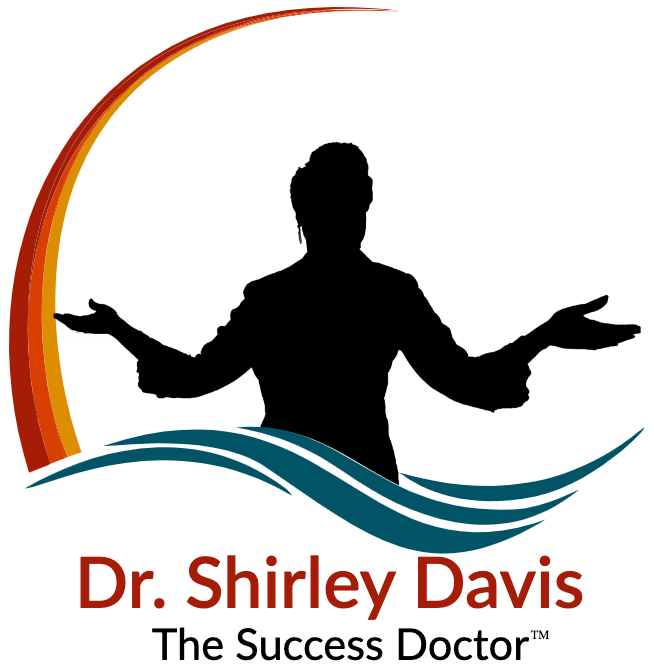10 Strategies for Getting a Seat at the Leadership Table
By Dr. Shirley Davis, SPHR

As the global workforce becomes more complex and competitive, the demand for HR professionals to be strategic and business-focused is no longer an option. It is a necessity. By doing so, HR professionals are not only providing leadership and strategic guidance, but they are also positioning themselves for a seat at the leadership table that so many covet.
However, in order to achieve that coveted seat, I believe that you must be a visionary,be visible,be vocal, and you must add value(what I’ve coined as my 4 V’s to Career Success). With that in mind, I have outlined a set of strategies to help HR professionals and other business leaders get that seat at the table with senior leadership.
Earn it. Don’t just expect to get invited.
This first strategy is earning that seat. HR professionals, diversity and inclusion practitioners, and other business leaders have to be able to show worth and value. We cannot assume that we should get the seat just because we have a senior title or position. We have to drive results, build trust, demonstrate credibility and high levels of competence, and show that the business really should not make a decision without HR’s participation.
At the core, the HR professional is responsible for ensuring that the organization has the right talent in the right areas, doing the right kind of work
that’s going in the right direction. Remember that people don’t leave organizations; they leave bad leaders.
Know your organization’s business.
Human Resources is considered the “people side of the business” but that doesn’t diminish the fact that it is still a business-within-a-business. And that means that HR must spend time outside of the HR department as often as possible getting to know the business. It’s important to learn about the key areas of the business such as Communications, Finance, Sales, Operations, Production, Quality, Supply Chain and others. Understand the construct, the infrastructure and what the business objectives of each division are. Understand what the employees do and how they get their work done. In addition to knowing what’s going on in different divisions, learn about the customers, competitors, and marketplace trends that have an impact on your organization. All these things will inform how you build your HR strategy and how you can make valuable contributions to enabling the business’ success.
that HR must spend time outside of the HR department as often as possible getting to know the business. It’s important to learn about the key areas of the business such as Communications, Finance, Sales, Operations, Production, Quality, Supply Chain and others. Understand the construct, the infrastructure and what the business objectives of each division are. Understand what the employees do and how they get their work done. In addition to knowing what’s going on in different divisions, learn about the customers, competitors, and marketplace trends that have an impact on your organization. All these things will inform how you build your HR strategy and how you can make valuable contributions to enabling the business’ success.
Know your leaders.
Meet and build relationships with the organization’s leaders —at all levels. Spend time with them; find out what’s important to them. Find out how they perceive you as an HR leader, how they perceive the role of HR and the work that you do. Discover their sweet spots and their pain points, meaning, what are they most passionate about, what’s keeping them up at night, and where are some of their business gaps and weaknesses. Also explore where are they most successful and why. Learn where you can make offers to assist in closing their gaps and solving their business challenges. Once they see you as invested in their business, and as a strategic partner, coach and advocate, they then will invite you to the table.
Be/become a subject-matter expert.
 As HR or diversity and inclusion professionals, we must be knowledgeable and serve as trusted advisers and thought leaders to the other leaders in the business. Leaders — at all levels and in all business units and divisions — have a responsibility for some HR functions in the organization. As HR professionals, we have to help leaders hire great talent; coach, develop and manage performance; build great teams; create inclusive, respectful work environments; and adhere to state and federal laws. Just as other leaders in the company are experts in their areas of the business and know how to drive operational goals, HR professionals must demonstrate their expertise and drive HR results in the operation. Sometimes that means not always speaking in HR terminology. We must learn to speak the language of business such as understanding customer service terminology, knowing the products and services, understanding the metrics, and so on. Let that knowledge inform how you may need to shift, adjust or enhance your approach, so that your organization is able to be proactive in the marketplace. Lastly, understand what the future looks like for your business and industry and be able to offer solutions in a proactive versus reactive way.
As HR or diversity and inclusion professionals, we must be knowledgeable and serve as trusted advisers and thought leaders to the other leaders in the business. Leaders — at all levels and in all business units and divisions — have a responsibility for some HR functions in the organization. As HR professionals, we have to help leaders hire great talent; coach, develop and manage performance; build great teams; create inclusive, respectful work environments; and adhere to state and federal laws. Just as other leaders in the company are experts in their areas of the business and know how to drive operational goals, HR professionals must demonstrate their expertise and drive HR results in the operation. Sometimes that means not always speaking in HR terminology. We must learn to speak the language of business such as understanding customer service terminology, knowing the products and services, understanding the metrics, and so on. Let that knowledge inform how you may need to shift, adjust or enhance your approach, so that your organization is able to be proactive in the marketplace. Lastly, understand what the future looks like for your business and industry and be able to offer solutions in a proactive versus reactive way.
Be a partner/collaborator across the organization.
Many organizations have transitioned their HR professionals into HR Business Partner (HRBP) roles in which they are located and embedded into the business units both physically and functionally. It allows for better collaboration among the business leaders and HR; it enables HR to experience firsthand how the business operates on a daily basis; and it provides opportunities where human resources can offer more integrated solutions. By doing this, the strategic business partner model is showing great results and successes for the organization. For those HR departments that have not moved to this model, it’s still critical for HR to partner and collaborate across the organization and to be viewed by leaders as accessible and invested in their business units. At the same time, employees appreciate seeing HR as a visible entity understand the unique complexities and challenges that they face each day. Additionally, they expect that HR will be their advocates and champions and to solve these challenges and to make the work environment more inclusive, respectful, and a great place to work.
Our profession has gotten a bad rap for being too much in the weeds, too tactical and administrative—focusing on putting out fires, being hall monitors, completing stacks of paperwork, and organizing company picnics and holiday parties and not having time to be strategic.
Demonstrate strong leadership skills.
People want to follow leaders who have a vision, are transformational, are problem-solvers, are creative, are great coaches and mentors, and have integrity and conviction for what they do. Moreover, executives want to know how you get results and how you work with people at all levels. Do you have influence up, down and across the organization? Do you have integrity, act ethically and build great teams? Do you bring out the best in people and see great talent? Are you able to leverage that talent?
Human resources has the responsibility of helping to develop leaders who also can develop other leaders. Our role is critical because we have to ensure that current leaders are leading effectively while they are building leadership capability on their teams. At the core, the HR professional is responsible for ensuring that the organization has the right talent in the right areas, doing the right kind of work that’s going to drive the organization in the right direction. Remember that people don’t leave organizations; they leave bad leaders. If you are a leader and nobody is following you, then you are an ineffective leader.
Measure outcomes and goal achievement, not work processes.
Being able to demonstrate strong, sustainable results is important, so you need to get some quick wins and learn to measure outcomes and goal achievement, not just work processes. Just because you implement a new process doesn’t mean that it was successful. It may have costs a lot of money and took a lot of resources but may not be adding any value. Know your key metrics and key performance indicators (KPIs) and back them up with research and data that shows how HR outcomes have saved money or generated revenue for the company or created greater efficiencies. To that end, keep an HR scorecard, dashboard or report card to track the tangible metrics that you can influence and control and that affect the bottom line. Make sure you are measuring the right things, because what might matter in one organization won’t necessarily matter in another. Part of getting to know the business, its leaders, the operational strategic plan and goals, and what’s keeping your senior leaders up at night is so that you can assist them in achieving their goals. And you want to be able to show how your efforts made a positive impact.
just work processes. Just because you implement a new process doesn’t mean that it was successful. It may have costs a lot of money and took a lot of resources but may not be adding any value. Know your key metrics and key performance indicators (KPIs) and back them up with research and data that shows how HR outcomes have saved money or generated revenue for the company or created greater efficiencies. To that end, keep an HR scorecard, dashboard or report card to track the tangible metrics that you can influence and control and that affect the bottom line. Make sure you are measuring the right things, because what might matter in one organization won’t necessarily matter in another. Part of getting to know the business, its leaders, the operational strategic plan and goals, and what’s keeping your senior leaders up at night is so that you can assist them in achieving their goals. And you want to be able to show how your efforts made a positive impact.
Speak up on the tough issues.
Talking about tough issues can be a real challenge. In our role as HR and diversity professionals, we deal with a lot of highly sensitive information and difficult situations. We must have the courage to point out bold and abrasive disrespect and be willing to talk about issues that may cause friction or conflict in the workplace and that may be unpopular. For example, you must be able to discuss with leaders employee complaints such as why no one wants to work for them, and why is there so much turnover in a particular area. The topic of termination is another example that is never an easy conversation, but we have to have courage and strength to discuss it in a way that maintains a person’s self-esteem or doesn’t make leaders feel as if they are just bad leaders. Some may be, but we have to find ways to maintain a working relationship while also coaching them on what is and is not appropriate, what is and is not acceptable, and even what’s legal and illegal. You also have to be diplomatic and respectful.
Think innovatively, strategically and futuristically.
Our profession has gotten a bad rap for being too much in the weeds, too tactical and administrative—focusing on putting out fires, being hall monitors, completing stacks of paperwork, and organizing the company picnics and holiday parties and not having time to be strategic enough. This area — thinking innovatively, strategically and futuristically — is an opportunity to change that. This is a great opportunity to consider other options such as outsourcing some of the administrative tasks; automating some of the manual tedious tasks; and/or reprioritizing some projects and programs altogether. Rather than being asked or told what to do, HR professionals must be proactive in sharing trends, best practices, and opportunities or missed opportunities with leaders to move the function from an order-taker to a thought partner and thought leader model, as discussed earlier.

Reinvent Yourself—Invest in your development.
As the workforce continues to change and become more diverse, global, and complex, HR professionals and D & I leaders must upgrade and enhance their knowledge, skills, approaches, mindsets, and behaviors. Like so many companies who reinvented themselves amidst a global recession and in a V.U.C.A. world (volatility, uncertainty, complexity, and ambiguity), so must HR professionals reinvent themselves. Old models and mindsets that still resemble that of a personnel department, outdated systems that don’t embrace new technologies of the 21st century, and new competencies that aren’t developed such as agility, flexibility, authenticity, creativity, innovation, business acumen, strategic thinking, cultural competence, collaboration, and inclusion will cause HR professionals to remain tactical and administrative. Moreover, they will cease to be effective and relevant, and can be guaranteed that they will not get a seat at the table.
Using these 10 strategies will help any HR professional — at any level — be more strategic and business-minded, which is a necessity in today’s globally diverse and competitive environment. For success in your career, in your organizations and certainly in the HR profession, remember, you have toearn your seat at the table by being a visionary, being visible, being vocal and adding value.
 Dr. Shirley Davis, SPHR is a well-respected thought leader on global workforce trends and solutions and owner of SDS Enterprises, LLC. She has been named one of the top 100 corporate executives America by Uptown Professional for four consecutive years and she has been featured and quoted on the Today Show, NPR, CNN.com, the Washington Post, and the Wall Street Journal, to name a few. She’s the author of the best-selling book, Reinvent Yourself: Strategies for Achieving Success in Every Area of Your Life.
Dr. Shirley Davis, SPHR is a well-respected thought leader on global workforce trends and solutions and owner of SDS Enterprises, LLC. She has been named one of the top 100 corporate executives America by Uptown Professional for four consecutive years and she has been featured and quoted on the Today Show, NPR, CNN.com, the Washington Post, and the Wall Street Journal, to name a few. She’s the author of the best-selling book, Reinvent Yourself: Strategies for Achieving Success in Every Area of Your Life.
